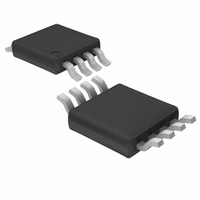LTC1503CMS8-1.8 Linear Technology, LTC1503CMS8-1.8 Datasheet - Page 6

LTC1503CMS8-1.8
Manufacturer Part Number
LTC1503CMS8-1.8
Description
IC BUCK/SW CAP 1.8V .1A 8MSOP
Manufacturer
Linear Technology
Type
Step-Down (Buck), Switched Capacitor (Charge Pump)r
Datasheet
1.LTC1503CS8-1.8PBF.pdf
(12 pages)
Specifications of LTC1503CMS8-1.8
Internal Switch(s)
Yes
Synchronous Rectifier
No
Number Of Outputs
1
Voltage - Output
1.8V
Current - Output
100mA
Frequency - Switching
600kHz
Voltage - Input
2.4 ~ 6 V
Operating Temperature
-40°C ~ 85°C
Mounting Type
Surface Mount
Package / Case
8-MSOP, Micro8™, 8-uMAX, 8-uSOP,
Lead Free Status / RoHS Status
Contains lead / RoHS non-compliant
Power - Output
-
Available stocks
Company
Part Number
Manufacturer
Quantity
Price
Company:
Part Number:
LTC1503CMS8-1.8
Manufacturer:
LT
Quantity:
5 321
Company:
Part Number:
LTC1503CMS8-1.8
Manufacturer:
LT
Quantity:
10 000
Part Number:
LTC1503CMS8-1.8
Manufacturer:
LINEAR/凌特
Quantity:
20 000
Part Number:
LTC1503CMS8-1.8#PBF
Manufacturer:
LINEAR/凌特
Quantity:
20 000
Company:
Part Number:
LTC1503CMS8-1.8#TRPBF
Manufacturer:
LINEAR
Quantity:
9 817
Part Number:
LTC1503CMS8-1.8#TRPBF
Manufacturer:
LINEAR/凌特
Quantity:
20 000
APPLICATIO S I FOR ATIO
LTC1503-1.8/LTC1503-2
General Operation
The two most common methods for providing regulated
step-down DC/DC conversion are linear DC/DC conversion
(used by LDOs) and inductor-based DC/DC conversion.
Linear regulation provides low cost and low complexity, but
the conversion efficiency is poor since all of the load cur-
rent must come directly from V
down conversion provides the highest efficiency, but the
solution cost and circuit complexity are much higher. The
LTC1503-X provides the efficiency advantages associated
with inductor-based circuits as well as the cost and sim-
plicity advantages of an inductorless converter.
The LTC1503-X is a switched capacitor step-down DC/DC
converter. The part uses an internal switch network and
fractional conversion ratios to achieve high efficiency over
widely varying V
control circuitry selects the appropriate step-down con-
version ratio based on V
optimize efficiency. The part has three possible step-down
modes: 2-to-1, 3-to-2 or 1-to-1 (gated switch) step-down
mode. Only two external flying caps are needed to operate
in all three modes. 2-to-1 mode is chosen when V
greater than two times the desired V
chosen when V
than 2 times V
below 1.5 times V
switch the step-down ratio as needed to maintain output
regulation under heavy load conditions.
Regulation is achieved by sensing the divided down output
voltage and enabling the charge pump as needed to boost
the output back into regulation. This method of regulation
allows the LTC1503-X to achieve high efficiency at very
light loads. The part has shutdown capability as well as
user controlled inrush current limiting. In addition, the
part can withstand an indefinite short-circuit condition on
V
Step-Down Charge Pump Operation
Figure 1a shows the charge pump switch configuration
that is used for 2-to-1 step down. When the charge pump
is enabled in this mode, a two phase nonoverlapping clock
generates the switch control signals. On phase one of the
clock, flying capacitor C1 is connected through switches
6
OUT
and is also overtemperature protected.
OUT
IN
IN
OUT
is greater than 1.5 times V
. 1-to-1 mode is chosen when V
U
and output load conditions. Internal
. An internal mode skip function will
IN
U
, V
OUT
IN
. Inductor-based step-
and load conditions to
W
OUT
. 3-to-2 mode is
OUT
U
but less
IN
IN
falls
is
S1 and S2 across V
the voltage on C
C
and the bottom plate is connected to V
across C1 is less than V
be transferred from C1 onto C
voltage on C
in 2-to-1 mode, charge transfer from C1 onto C
on both phases of the clock, and the voltage on C
driven towards 1/2V
tion. Since charge current is sourced from ground on
phase one of the clock, current multiplication is realized
with respect to V
I
relative to a linear regulator.
The 3-to-2 conversion mode also uses a nonoverlapping
clock for switch control but requires two flying capacitors
and a total of seven switches (see Figure 1b). On phase
one, C1 and C2 are connected in series across V
sum of the voltages across C1 and C2 is greater than V
charge is transferred from the flying caps onto C
thereby reducing the average voltage on the flying caps
and raising the voltage on the output capacitor. On phase
two, the two flying capacitors are connected on parallel
between V
the two capacitors during phase one is V
be transferred from V
caps if V
manner, charge is again transferred from the flying caps
to the output on both phases of the clock, and the voltage
on C
regulation. As in 2-to-1 mode, charge current is sourced
from ground on phase one of the clock which results in
increased power efficiency. I
approximately (3/2)I
VIN
OUT
. This results in significant efficiency improvement
OUT
. On phase two, the top plate of C1 is connected to V
Figure 1a. Step-Down Charge Pump in 2-to-1 Mode
V
is driven towards (2/3)V
IN
IN
IN
minus V
OUT
and V
(EXTERNAL)
OUT
and raising the voltage across C1. Thus,
IN
S4
2
OUT
OUT
, i.e., I
, charge is transferred from C1 onto
IN
OUT
VIN
C1
. Since the average voltage across
. If the voltage on C1 is greater than
IN
until the output is back in regula-
IN
.
/2 is greater than V
C1
/2 during phase two, charge will
to V
VOUT
+
S2
C1
1
VOUT
–
OUT
OUT
equals approximately 2 •
S3
S1
IN
2
1
through the two flying
in 3-to-2 mode equals
until the part is back in
thereby boosting the
OUT
OUT
1503-1.8/2 F01a
. If the voltage
/2, charge will
V
OUT
OUT
OUT
OUT
. In this
occurs
. If the
OUT
OUT
OUT
IN
is
,














